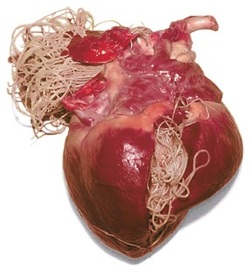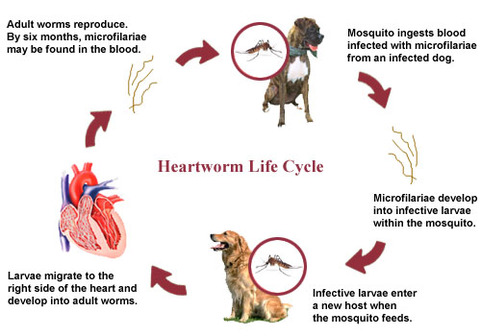Heartworms

Comparison of Heartworm Disease in Dogs vs. Cats
In both dogs and cats, heartworm disease is caused by the parasite Dirofilaria immitis and is transmitted by the mosquito.
|
Susceptibility: Virtually 100% of dogs exposed to infective larvae become infected
Longevity of Worms: 5-7 years Ectopic Infections: Occasionally Number of Worms: Not uncommon to find more than 30 Single Sex Infections In High Endemic Areas: Common Microfilaria In Blood: Persistent, Very common (80%-90%), Can last years (even after death of adult worms!) Organ with Greatest Damage: Heart and Lungs Significance of Small Numbers of Worms: Depends on the size of the dog, the size of the worm burden, and exercise level Diagnosis: Relatively Simple Treatment: None approved, High risk complications Prevention: Several products approved
|
Susceptibility: Lower than dogs. 61 - 90% of cats exposed to infective larvae become infected
Longevity of Worms: 2-3 years Ectopic Infections: Not uncommon Number of Worms: Usually less than 6, 1-2 worms most common Single Sex Infections In High Endemic Areas: Unusual Microfilaria In Blood: Transient (Lasts about 1 month); Seen in less than 20% of naturally infected cats Organ with Greatest Damage: Lungs Significance of Small Numbers of Worms: Potentially fatal Diagnosis: Complex Treatment: Compound approved, Complications manageable Prevention: Several products approved
|




